The next morning our wake up tea came an hour late, at 7:00. No, our guides had not overslept. They had looked outside and seen that it was snowing. That did not seem like a good omen on a day when we would climb another 2000 feet to 16,300. We had a leisurely breakfast and realized that though the sky was full of snow there were only a couple of inches on the ground and the hiking would not be difficult.
We walked through the village then turned and climbed steeply but briefly to the top of the ridge. There the trail leveled off, climbing very gradually. We were above tree line and the snow continued. We hiked past a herd of yaks in a pasture of sorts, enclosed by rock walls but no gate. They did not seem eager to escape.
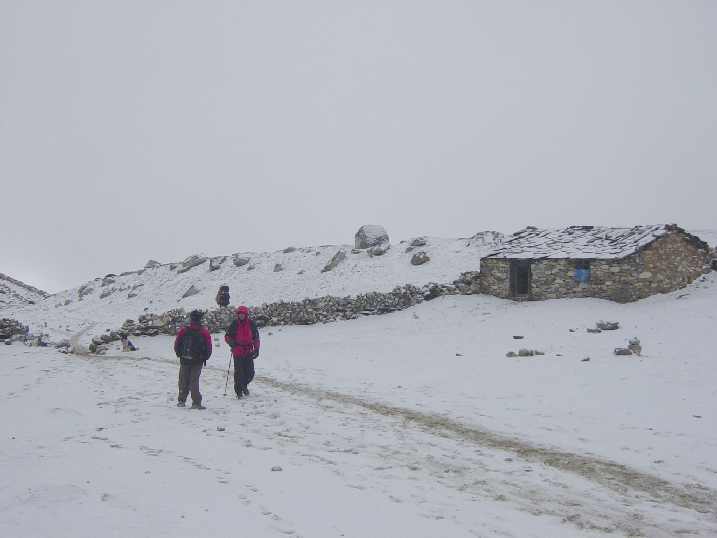
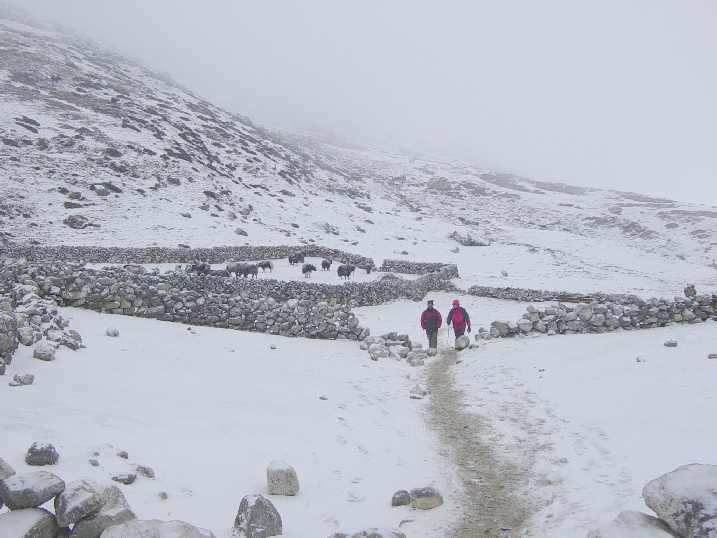
After lunch in a tiny village called Duglha, we climbed more steeply to an area with dozens of memorials to those who died on Everest, mostly Sherpas.
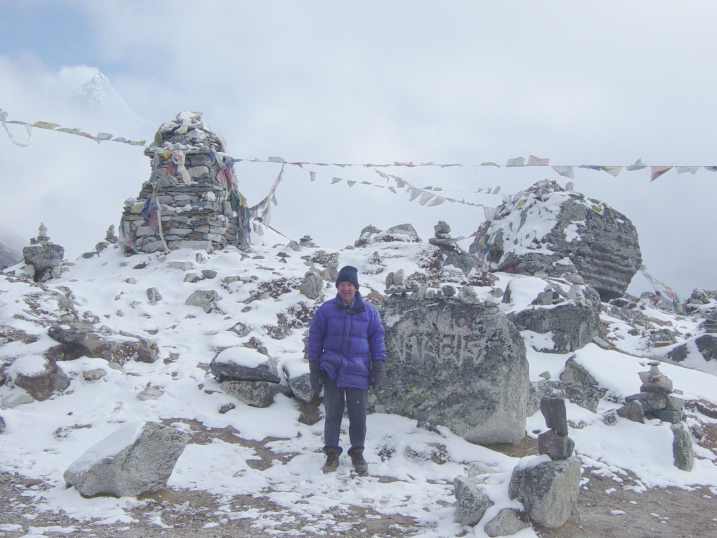
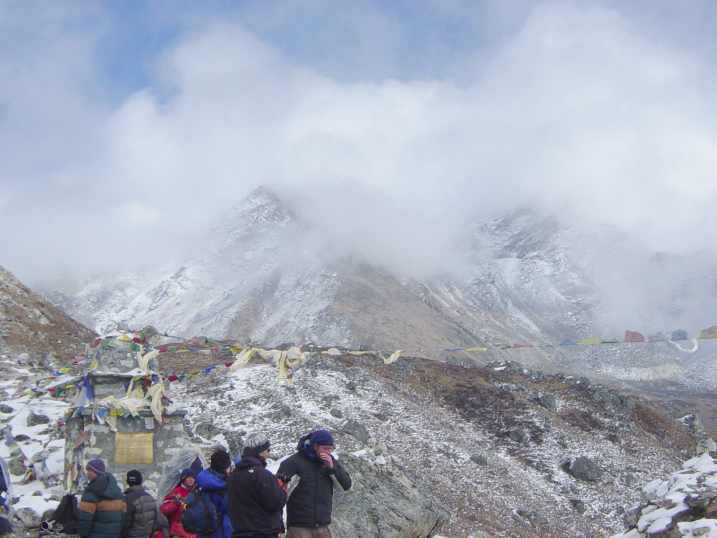
We continued climbing to Lobuche. The snow seemed to be letting up. We were happy to relax in the lodge.
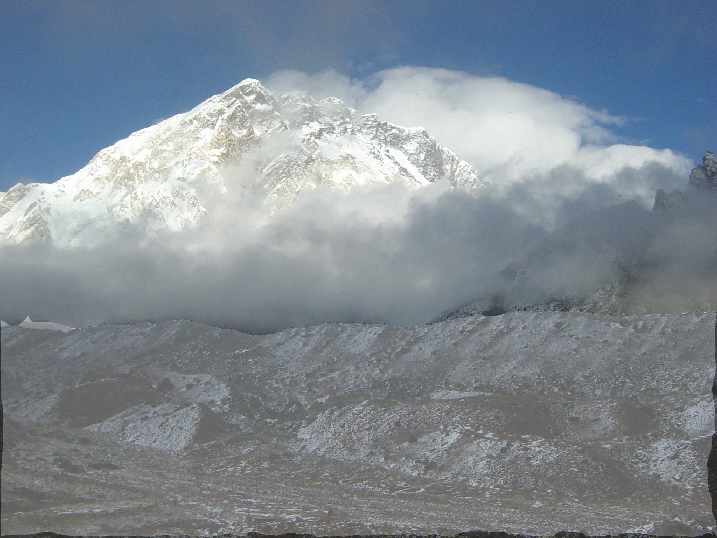
We got up early the next morning and were relieved to see a beautifully clear sky. Before 8:00 we were on our way.
The climb to our lodge in Gorak Shep was steep and rugged, following the edge of the Khumba Glacier. I was frustrated that after a short steep climb we often dropped back down, losing much of the altitude we had worked so hard to gain. It took us only only three hours, but at this height it was exhausting. In the first picture we turned around to admire the valley with the glacier we had been following.
The we looked down on the lodges where we would spend the night. Looking ahead, we saw the route the climbers take to Everest. They continue up the glacier, then turn right following another glacier.
Directly across the glacier towering over us was Nuptse Peak, part of the same mountain as Everest. To its left, only five or six miles away, but looking smaller than Nuptse was Everest.
We descended to Gorak shep and had an early lunch in a sunny dining room of a lodge that was otherwise quite cold. I tried to collect some energy. At Noon we began to climb Kalapathar Peak, at 18,300 feet the highest point on our trek. I would have preferred to take a nap for an hour or two before the climb, but we saw some clouds moving in. Now I had no energy at all -- breathing was hard work. Every time I took a few steps I had to stop to catch my breath, then every few minutes sit down for more rest. Unfortunately, as the afternoon progressed there were more clouds, so we never got the 360 degree panorama, but Everest was usually visible. Below us we could see the place where most Everest expeditions set up their base camps, but it was empty now. Most expeditions go in May, but other years there were November and December attempts.
Everest is the black peak in the center.
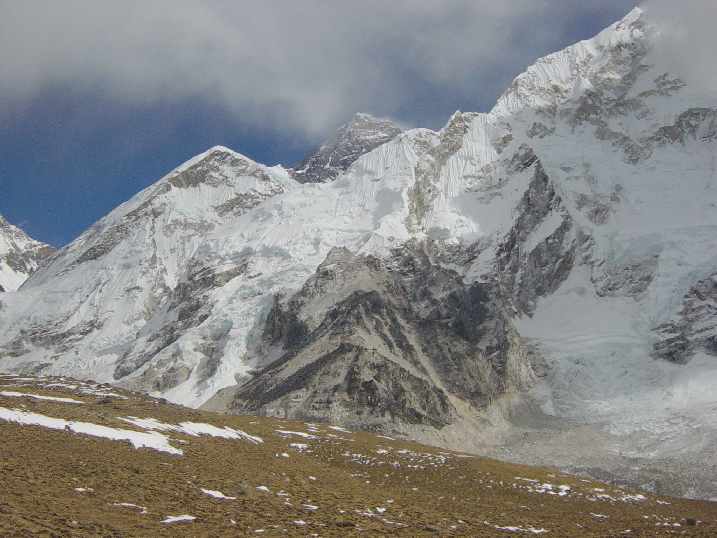
Everest Base Camp is in the flat area on the left side of these pictures, where the glacier we were following turns right to climb out of the valley.


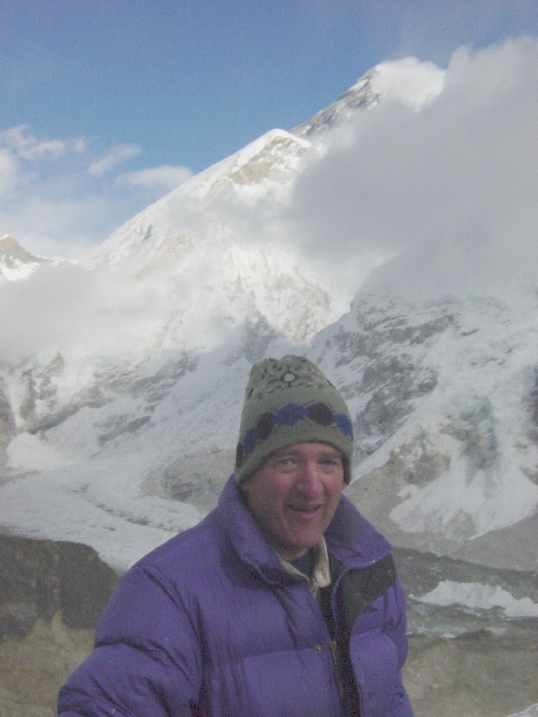
The view did not exactly match the one on the postcard, even though the picture was taken from the same place. But it was cold and windy and I was to exhausted to complain!

The hike down was quick and painless -- two and a half hours up, half an hour to get back down.
It had taken us nine days to trek up to this point. But we decided to speed up our trip back since the altitude was bothering many of us and at least one person had a plane that he would miss if our flight back to Kathmandu was delayed. The original schedule called for five days to trek back to the airport at Lukla, but we decided to do it in three days. We got up early the next morning and started down. The first part was hard work because I didn't have enough energy for all the short steep uphills. But the going got easier as we descended. Sometimes we turned around and looked back up the valley, seeing what we had accomplished just a day or two before.

Other times we looked down the valley, toward our destination somewhere in the maze of peaks.

We spent the first night of our descent in a village where we had stopped for a morning tea break four days earlier.
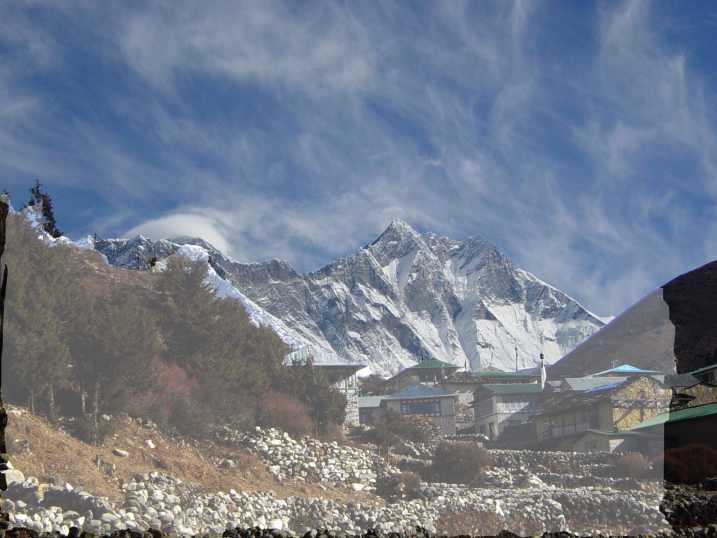
The next morning we hiked back up to the Tengboche Monastery for another cinnamon roll and our last good view back to Everest.
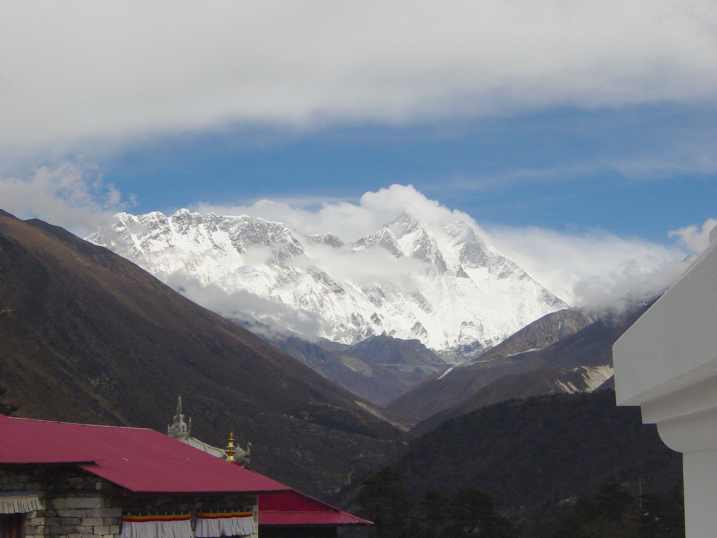
Then we hiked back down to the bottom of the valley for lunch, only to have to climb back up.
We were pleased to spend the night back in the relative luxury of Namche Bazaar -- electric lights, a warm dining room, indoor toilets, western style (no need to squat over a hole!).
On our last day of trekking, we dropped quickly from Namche Bazaar to a low enough elevation that we no longer needed hats and warm coats. We recrossed the suspension bridges and again saw green grass growing. We saw many porters carrying goods up to Namche Bazaar -- I was glad to have a different job!
It was dark by the time we arrived in Lukla but the lodge was comfortable and slept well. We worried about our flight back to Kathmandu, but it was only a little late and we were back in time for lunch.
I spent the next couple days doing lazy sight-seeing. One highlight was a visit to a Hindu Temple where we witnessed an elaborate cremation ceremony by the side of the river.
I also visited lots of temples, many with prayer wheels, all with creatures guarding the entrance.
Mostly I appreciated being able to sleep late, enjoy a good breakfast in the sun of the hotel's courtyard and decide for myself how energetic I wanted to be. On the way back "home" to Tashkent I spent a day in New Delhi, wandering around the old city and eating delicious Indian food.
Already I'm forgetting how difficult the high altitude made trekking. Other parts of Nepal are less safe than the Everest region as Maoists rebels are fighting an authoritarian monarch, but I would like to return to Nepal for another trek.